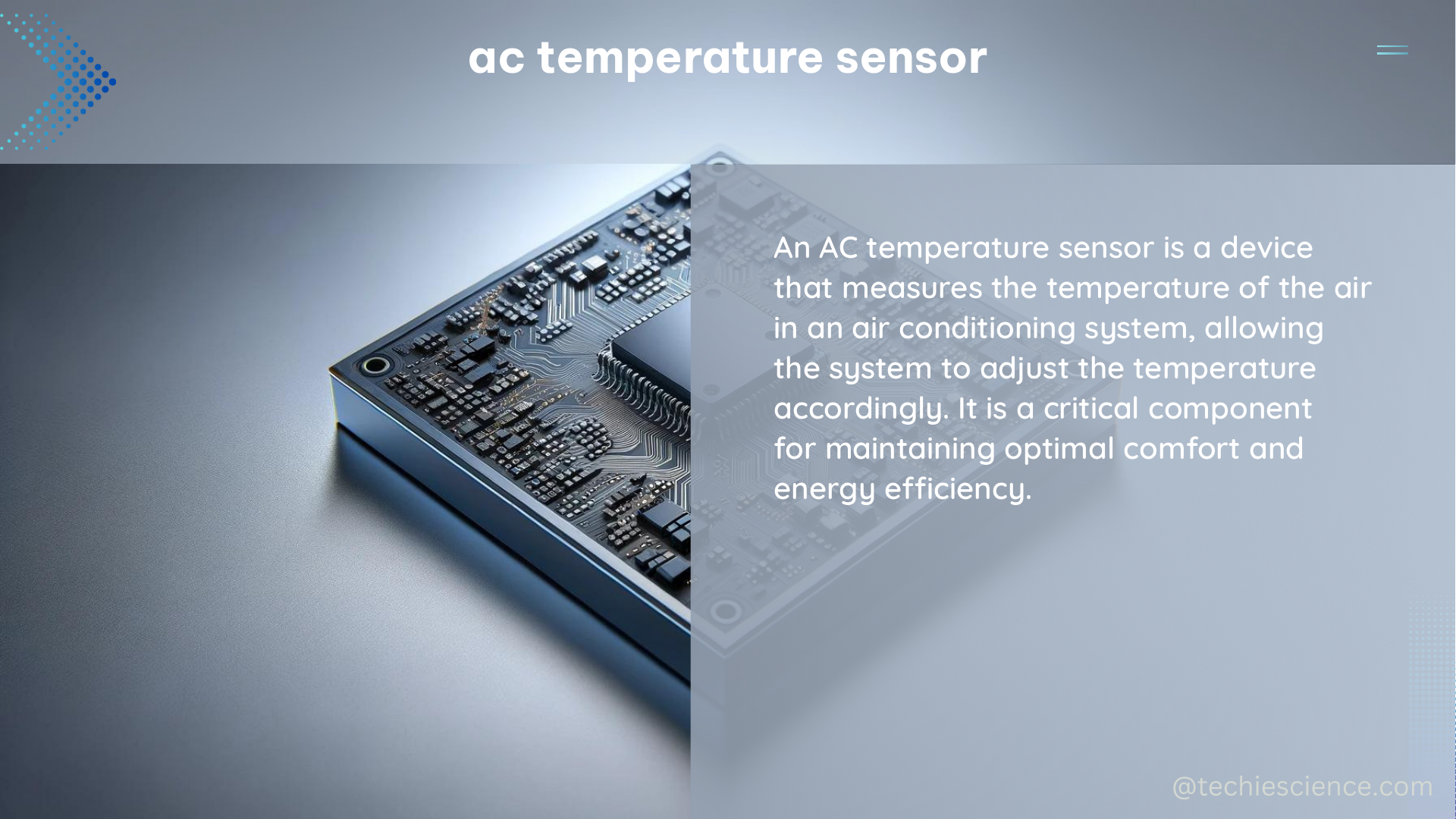The temperature sensor in an air conditioning (AC) unit is a critical component that plays a pivotal role in maintaining the desired indoor temperature. However, the accuracy of these sensors can vary significantly based on the brand and model of the AC unit. This comprehensive guide delves into the technical intricacies of AC temperature sensors, providing you with the knowledge and tools to ensure accurate temperature readings and optimal performance.
Understanding the Importance of AC Temperature Sensors
AC temperature sensors are responsible for continuously monitoring the ambient temperature and relaying this information to the AC unit’s control system. This data is then used to regulate the cooling or heating output, ensuring that the desired temperature is maintained. Accurate temperature readings are essential for the efficient and effective operation of the AC unit, as well as for the comfort and well-being of the occupants.
Technical Specifications of AC Temperature Sensors

To ensure optimal performance, AC temperature sensors must meet specific technical requirements. These include:
Measuring Range
The sensor should have a wide measuring range, typically between -200 to +400 °C, to accommodate the various temperature conditions encountered in different environments and climates.
Accuracy
The sensor should have an accuracy of ±0.3 °C within the temperature range of -60 to +60 °C. This level of precision is crucial for maintaining the desired indoor temperature.
Resolution
The sensor should have a resolution of 0.01 m/s (60 vane) to provide granular temperature data for precise control.
Wireless Communication
The sensor should communicate wirelessly using Zigbee technology, which offers reliable and secure data transmission between the sensor and the AC unit’s control system.
AC Unit Specifications
The AC unit itself should have a rated current of AC 15 and a frequency of 50-60 Hz to ensure compatibility and proper operation.
Minimizing Temperature Measurement Uncertainty
Accurate temperature readings are essential for the efficient operation of an AC unit. However, various factors can contribute to temperature measurement uncertainty, which can lead to inaccurate readings and suboptimal performance. To minimize this uncertainty, it is crucial to address the following:
Self-Heating
Self-heating occurs when the sensor’s own electrical resistance generates heat, which can affect the temperature reading. To mitigate this, it is essential to choose an excitation that allows for acceptable instrumentation measurement uncertainty while ensuring that self-heating is negligible at one or two points where it is likely to be most significant.
Output Signal Measurement
The accuracy of the output signal measurement can also contribute to temperature measurement uncertainty. To address this, it is important to carefully calibrate the sensor and ensure that the measurement system is properly configured to provide accurate and reliable temperature data.
Thermal Resistance
Measuring the thermal resistance in the temperature range of interest and calculating the optimum operating point can help minimize temperature measurement uncertainty and ensure accurate readings.
Addressing Inaccuracies: The Windmill Brand Example
As mentioned in the initial question, the Windmill Brand AC temperature sensor has been reported to be extremely inaccurate while in ECO mode, reading 4-10 degrees cooler than the actual temperature. This issue can be attributed to the sensor’s proximity to the cold coils, which can cause it to read the coil temperature more accurately than the room temperature.
To address this problem, it is essential to ensure that the sensor is positioned in a location that is representative of the actual room temperature, rather than being influenced by the temperature of the AC unit’s internal components. Additionally, regular calibration and maintenance of the sensor can help improve its accuracy and reliability.
Conclusion
The AC temperature sensor is a critical component that plays a vital role in maintaining the desired indoor temperature. By understanding the technical specifications, minimizing temperature measurement uncertainty, and addressing potential inaccuracies, you can ensure that your AC unit operates at peak efficiency and provides optimal comfort for the occupants.
Remember, the key to mastering the art of AC temperature sensor is to stay informed, be proactive in maintenance, and continuously strive for accuracy and precision. With this comprehensive guide, you are well on your way to becoming a true expert in the field of AC temperature sensor management.
References:
– Reddit Post on Windmill Brand AC Temperature Inaccuracy
– Sensor Accuracy and Uncertainty Minimization
– Temperature Sensor Technical Specifications

The lambdageeks.com Core SME Team is a group of experienced subject matter experts from diverse scientific and technical fields including Physics, Chemistry, Technology,Electronics & Electrical Engineering, Automotive, Mechanical Engineering. Our team collaborates to create high-quality, well-researched articles on a wide range of science and technology topics for the lambdageeks.com website.
All Our Senior SME are having more than 7 Years of experience in the respective fields . They are either Working Industry Professionals or assocaited With different Universities. Refer Our Authors Page to get to know About our Core SMEs.